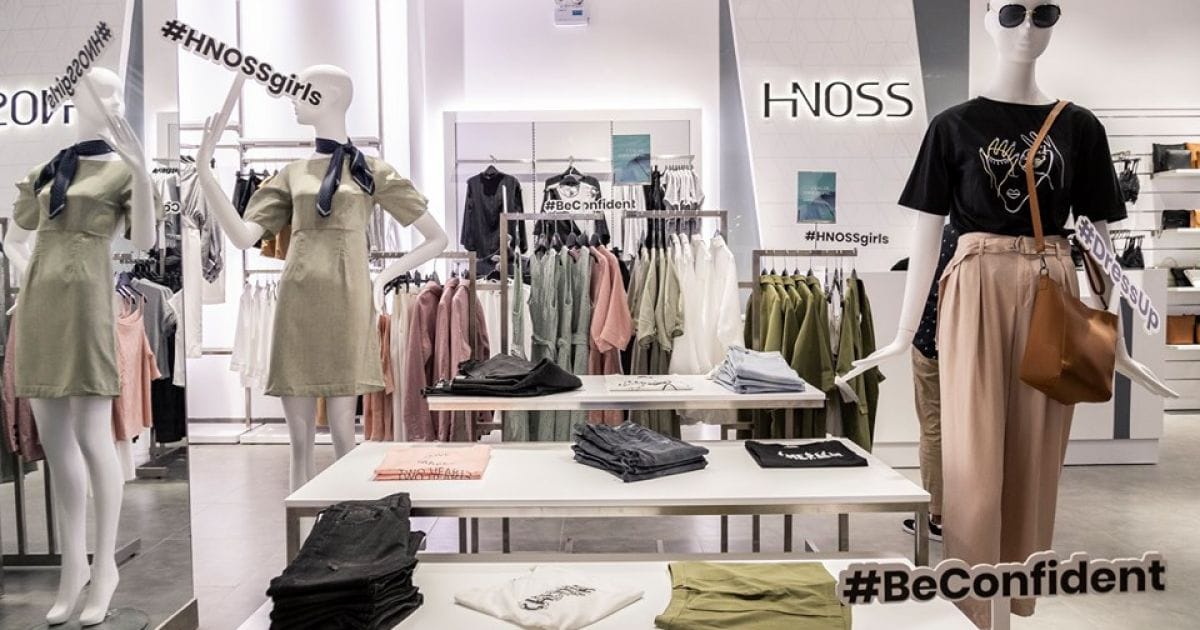Once a bold contender aiming to dominate Vietnam’s fashion retail market, Seedcom has quietly stepped back from its ambitions, marked by the recent departures of two of its key fashion investments—Eva de Eva and Hnoss.
Movements at Seedcom
In late March 2025, fashion enthusiasts were taken by surprise when Hnoss, a well-known Vietnamese women’s workwear brand, suddenly disappeared from social media. Adding to the speculation, the brand simultaneously halted sales on Shopee, fueling rumors about the future of the label that had operated since 2008 with a nationwide network of 36 stores.
Those suspicions were confirmed by Hnoss founder Co Hue Anh. “Closing Hnoss is not just shutting down a brand, but ending a journey filled with passion and youthful dreams. Is it painful? Of course. Closing a spiritual creation is never easy,” she shared publicly.
The closure of Hnoss brings back memories of Seedcom’s once-expansive vision to establish a modern “Made in Vietnam” fashion ecosystem. Founded by Dinh Anh Huan, one of the co-founders of Mobile World (Thế Giới Di Động), Seedcom leveraged its financial strength and retail chain expertise to back three domestic fashion names: Juno (footwear and bags), Hnoss, and Eva de Eva (high-end women’s fashion).
In 2015, Seedcom announced its investment in Juno when the brand operated only five stores. Within two years, Juno’s network had exploded to over 90 outlets nationwide, fueled by Seedcom’s support. In 2017, Juno posted impressive results with VND 470 billion in revenue and VND 27 billion in profit.
However, that momentum proved difficult to sustain. By 2019, Juno’s revenues had plateaued at VND 540 billion—a 10% decline from the prior year—while net losses doubled.
Hnoss followed a similar trajectory. After receiving investment, the brand’s 2019 revenue grew 40% to VND 122 billion, but net losses still doubled to VND 21 billion.
Seedcom’s 2019 acquisition of Eva de Eva also struggled to meet expectations. While the brand tripled its revenue to VND 161 billion in the first year under Seedcom, it also posted a staggering net loss of VND 71 billion. Seedcom ultimately exited Eva de Eva in 2021 after unsuccessful restructuring efforts.
Taken together, these cases outline the highs and lows of Seedcom’s foray into fashion retail. While its ambition was clear, the financial results reflect the harsh realities of the industry, where revenue growth did not translate into sustainable profitability.
The recent shuttering of Hnoss—and Seedcom’s earlier retreat from Eva de Eva—signify the end of its fashion dream, and raise broader questions about the challenges facing local apparel retailers in Vietnam.
A Polarized Fashion Retail Market
While Seedcom steps away from fashion, Vietnam’s overall fashion retail market remains promising. According to a FiinGroup report, the market is expected to reach $3.5 billion in value by the end of 2025, growing at an annual rate of 9–10%.
FiinGroup’s analysis shows clear segmentation between international and domestic players. Global fast fashion giants like Zara and H&M lead in revenue per store and sales efficiency in Vietnam. In contrast, domestic brands dominate in terms of store expansion, signaling rising demand for local “Made in Vietnam” fashion.
Vietnamese consumers continue to favor affordable, accessible products, though there remains room for boutique brands, traditional wear, and tailored apparel. The government’s goal to turn Vietnam into a global textile hub has attracted significant foreign investment, making it one of the world’s top three textile exporters.
However, the domestic market remains competitive. Local brands are under pressure to keep pace with well-capitalized international players while dealing with a saturated market and fast-changing trends.
FiinGroup advises local retailers to tap into demand in underserved provinces, optimize retail models for higher efficiency, and focus on cost control to achieve long-term profitability.
Examples of this strategic shift include Sixdo, which now operates nearly 70 showrooms across the country, and NEM, which has maintained steady growth since its acquisition by Japan’s Stripe International. Smaller brands like Chic-Land and Eva de Eva have focused on store optimization. Eva de Eva, post-Seedcom, has partnered with experience platform Insider to improve online performance.
A Market in Transition
Recent data suggests Vietnam’s fashion market is undergoing a significant transition. According to YouNet ECI’s e-commerce revenue report, the number of sellers generating revenue in the fashion and accessories category across platforms like Shopee, TikTok Shop, Lazada, and Tiki has declined (excluding international sellers).
This drop is concentrated among unofficial stores (non-Mall), while official stores (Mall) continue to grow in both volume and sales value. This trend reflects consumer preference for verified products and greater trust in official channels.
The case of The Peachy, a local fashion brand that recently withdrew from e-commerce platforms, highlights this shift. The brand cited issues such as refund and return policies as incompatible with their growth strategy and opted to launch their own e-commerce site to better control customer experience.
According to Nguyen Phuong Lam, Head of Market Research at YouNet ECI, this reflects a broader trend in Vietnam’s digital retail market: small, low-volume sellers without clear competitive advantages are being filtered out, while the market increasingly values professionalism, long-term business models, and customer trust.
Meanwhile, fashion retailers face persistent challenges. Data from the Ho Chi Minh City Business Association shows that over 50% of companies cite “lack of new orders” and “reduced consumer demand” as primary concerns. Inventory and outstanding debts are rising, while store closures and returned retail spaces become more common.
Vietnam’s fashion sector is highly fragmented, with small and medium-sized domestic brands making up about 80% of the market. Many of these brands struggle with cash flow due to high inventory levels and operating costs, often resulting in persistent losses.
As the market tightens, more brands are downsizing and shifting to online models, where competition moves beyond price and into areas like service quality, flexible return policies, and creative selling methods.
In this evolving landscape, the end of Seedcom’s fashion chapter is not an isolated event, but part of a broader industry transformation—one that is forcing both legacy and emerging players to rethink survival, growth, and what it means to lead in Vietnam’s fashion future.
Source: The Leader




